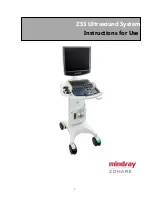
Chapter 3 – Operation
TestEquity 123HS Temperature/Humidity Chamber
Page 3-5
You may find that the temperature throughout the chamber is even, but always different from
what the F4/F4T Controller indicates. The correct way to adjust what the F4/F4T Controller
“displays” compared to what is measured at some point other than the controller’s sensor is with
the “Calibration Offset” parameter, NOT by recalibrating the controller.
Port Plugs
Foam port plugs are provided with a gray silicone surface on one side. The port plug must be
inserted with the gray silicone surface facing the inside of the chamber. Port plugs should be
considered expendable and be replaced when they no longer provide a good seal.
Avoiding Moisture (non-humidity mode)
Any time the ambient air is subjected to temperatures below the dew point, moisture will
condense out of the air. The effect is ice or frost during low temperature operation, or water
when maintaining over 0°C and cooling is required.
To avoid moisture condensation, make sure the port plugs are inserted at all times. Also, avoid
opening the chamber door while the chamber is operating at temperatures below room ambient.
When a low temperature test is completed, warm the chamber to at least room ambient before
opening the chamber door and before removing your test sample.
You CANNOT use the humidity system to control moisture at low temperatures. The humidity
system is disabled below +7°C. However, if you have a source of GN
2
(gaseous nitrogen) or Dry
Air, you can use the Purge system to eliminate moisture condensation at low temperatures.
Internal Test Fixtures
Some applications require internal fixtures to support test samples and provide a convenient
method of connecting wires and sensors. Fixtures must be designed to minimize their impact on
chamber functionality and performance.
Fixtures should be designed for easy removal to permit maintenance and cleaning of the
chamber. The chamber liner should never be drilled or screwed into. This will compromise the
integrity of the liner and permit moisture migration due to condensation into the insulation,
which will eventually impact performance and lead to premature rusting of the outer cabinet.
Fixtures should be constructed of stainless steel. This also applies to all screws and fasteners. All
welds should be passivated. To prevent rust and corrosion, never use iron or mild steel even if it
is painted or plated. Aluminum may be used. However, since the specific heat of aluminum is
double that of steel, it represents a greater load and will have more impact on the chamber
performance.
Make sure that all connectors, wiring, pc boards, and auxiliary components can withstand the
temperature extremes that they will be subjected to. In some cases, these components may not be
able to last after repeated tests and should be considered expendable.
Summary of Contents for 123HS
Page 2: ......
Page 20: ......
Page 24: ......
Page 28: ......
Page 30: ......
Page 48: ......
Page 50: ......
Page 51: ...Chapter 9 Drawings TestEquity 123HS Temperature Humidity Chamber Page 9 1 Chapter 9 Drawings...
Page 52: ......
Page 53: ...Electrical Subpanel Component Location Purge Subpanel optional Main Subpanel...
















































